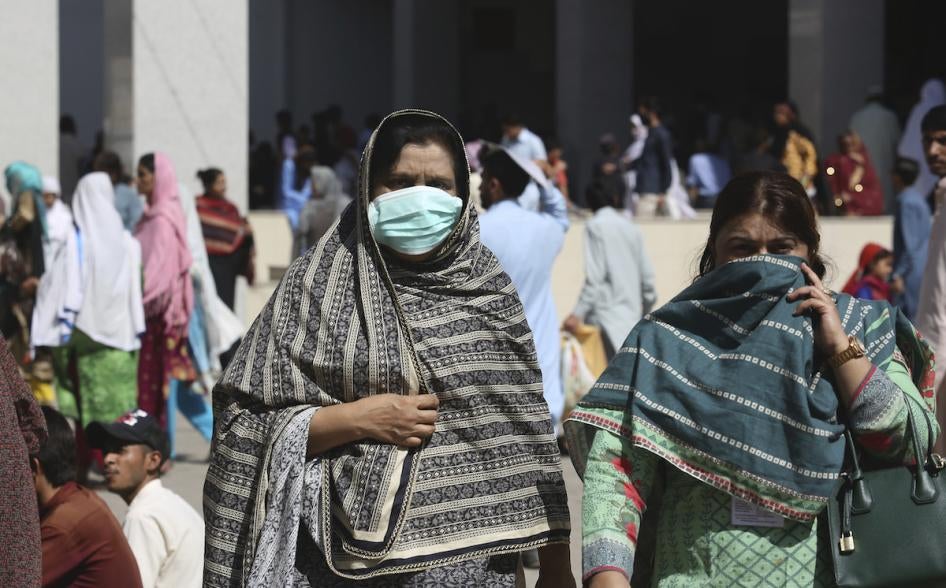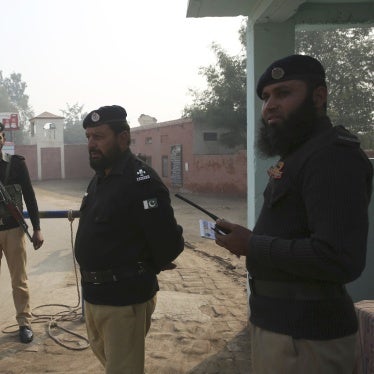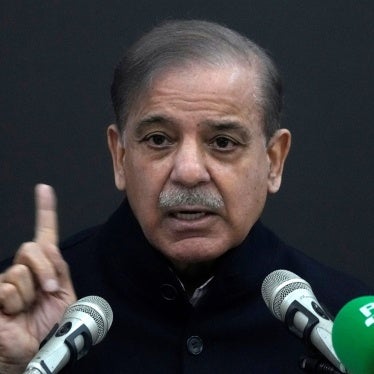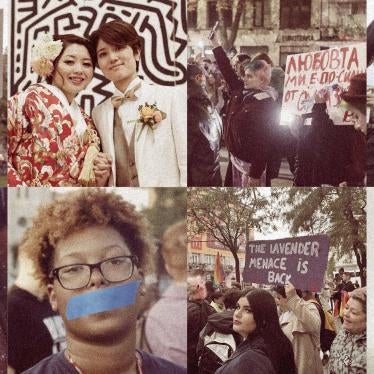Muhammad Boota, a domestic worker in Lahore, requires an insulin injection every 10 days to help manage his diabetes. But just one of these injections costs about one-third of his meagre monthly salary.
As with millions of Pakistanis with health conditions, the only thing that keeps food on his table and a roof over his head is unreliable charitable assistance to help pay for an unaffordable medicine that he cannot live without. His story is just one of so many examples of Pakistan’s severe healthcare crisis and one of so many reasons why the government needs to change course to ensure every Pakistani’s human right to the highest attainable standard of health.
According to the Pakistani nongovernmental healthcare organization, Sehat Kahani, more than 50 per cent of Pakistanis do not have access to basic primary healthcare services, and approximately 42 per cent have no access to health coverage. But recent government policy changes will most likely make this worse. In February, the cabinet increased the prices of 146 essential medicines, placing many of them even further out of the reach of people with lower incomes.
One key reason for the abysmal state of health care in Pakistan is the lack of government funding. According to 2021 figures, Pakistan’s government spends the equivalent of only 0.84 per cent of its GDP on healthcare – down from 0.94 per cent in 2019 and less than one-third of the average among other lower-middle-income countries (2.62 per cent). While public healthcare spending is not a sufficient condition for ensuring the right to health, adequate spending is a necessary one.
In its recent report, 'Global Failures on Healthcare Funding', Human Rights Watch analyzed 20 years of global healthcare expenditure data from the World Health Organization (WHO), looking at global and national trends. The researchers focused on how much both governments and private households spend on healthcare, the impact of out-of-pocket spending on the right to health, and how countries can shift this balance to improve access to healthcare through increased funding.
The Human Rights Watch analysis shows that in 2021, the most recent year for which data is available, most governments did not spend more than 5.0 per cent of their GDP or 15 per cent of their national budget on healthcare. These are two important and common benchmarks for assessing whether countries are on track to ensure universal health coverage, a goal distinct from but grounded in the human right to universally accessible health care derived from the International Covenant on Economic, Social and Cultural Rights.
While the world lagged behind these important spending targets, Pakistan lagged even further. In 2021, out of 189 countries, Pakistan came in at number 176 on the amount of money the government spent on healthcare when measured relative to the size of its economy, and 170 when measured relative to the size of its national budget. Put simply, the government has not made funding healthcare a priority.
Many countries that spent the most on healthcare that year were high-income countries. But many governments from less wealthy countries prioritized funding healthcare. Cuba, for example, reported spending the equivalent of 12.6 per cent of its GDP on healthcare in 2021. Bolivia, a lower-middle-income country like Pakistan, met both spending benchmarks in 2021.
When governments do not fund healthcare, individuals and households are left to shoulder the burden. In 2021, more than 57 per cent of Pakistan’s healthcare spending was borne by patients and families through out-of-pocket costs like Boota’s insulin bill. Reliance on out-of-pocket payments can increase inequalities in healthcare, widening gaps in quality of life and life expectancy instead of ensuring the availability, accessibility, and quality of healthcare.
Pakistan’s present healthcare crisis is situated in a larger context of soaring poverty, inflation, and unemployment, as the country faces one of the worst economic crises in its history. The situation is jeopardizing millions of people’s human rights, including their rights to health, food, and housing.
But at least a quarter of Pakistan’s population was living below the national poverty line well before this crisis. The World Food Programme estimated that in 2018, 21 per cent of Pakistan’s population was undernourished and 44 per cent of children under the age of five had stunted growth. The Asian Development Bank reported that for every 1,000 children born in Pakistan in 2020, 65 would die before their fifth birthday. Almost 25 per cent of the population did not have access to electricity in 2020.
Pakistan is also among the countries most vulnerable to climate change. It faces rates of warming considerably above the global average and most likely more frequent and intense extreme climate events. These events are particularly threatening for economically and socially marginalized populations, including older people, people with disabilities, and people living in poverty and rural areas.
The Pakistani government has begun the latest round of negotiations with the International Monetary Fund (IMF) over a multi-billion-dollar, three-year programme to ward off an economic meltdown. Acute shortages of foreign currency last year meant that many imports, including essential medicines, were scarce or unobtainable.
Servicing debt is a major impediment to governments’ investment in health care. Human Rights Watch found that Pakistan paid about seven times more per person to service its external public debts than it did on health care in 2021. The IMF and credit ratings agencies estimate that interest payments on its debt will consume between 50-60 per cent of the government's revenues this year – the worst ratio of any comparable economy in the world.
Creditor governments and institutions such as the IMF should assess the impact of debt payments on the ability of governments to meet their human rights obligations, including the right to health, and consider debt restructuring or relief to ensure that countries such as Pakistan can adequately protect their rights.
But funding alone is not enough. Pakistan’s lack of investment in healthcare mirrors a lack of political will by the authorities to address the issue. Pakistan does not have a constitutionally protected right to healthcare. The country's constitution mentions that the state shall provide “medical relief” in its “Principles of Policy” chapter, but these principles are unenforceable, aspirational objectives. Even the “medical relief” objective is restricted to citizens who cannot earn a living because of infirmity, sickness, or unemployment.
Pakistan should urgently recognize the right to healthcare in line with international standards. The country's authorities need to realize that upholding the right to health for its people is not optional.











